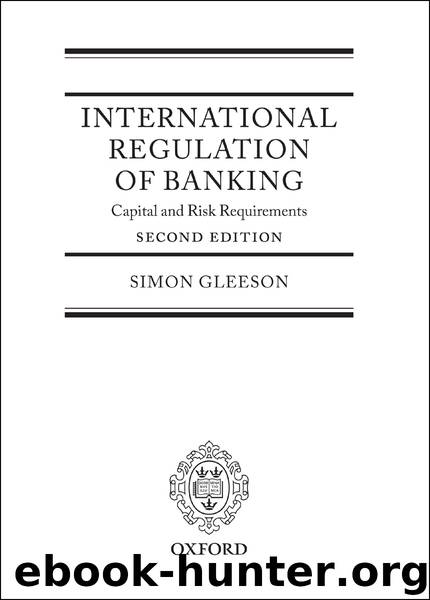International Regulation of Banking by Simon Gleeson

Author:Simon Gleeson
Language: eng
Format: epub
Tags: Capital and Risk Requirements
Publisher: Oxford University Press
Published: 2012-11-10T16:00:00+00:00
H. Annex—A Guide to Option Terminology
12.78
13
SECURITIES UNDERWRITING
13.01
Underwriting poses special problems for investment firm capital adequacy. An underwriting position is in principle a trading position—it is bought in order to be sold—and is generally properly dealt with in the trading book. However, unissued or unallocated securities have a number of anomalous features—for example, they do not give rise to specific market risk, since their price does not change—and the structure of underwriting does not fit easily within either the option or the ‘synthetic short’ analysis which is used for ordinary trading activities. Consequently, a specialized regime exists to deal with it. It should be noted that the underwriting regime only applies to new securities—meaning either securities which are created for the purpose of the offer being underwritten, or securities which have not previously been offered for sale to the public at large or admitted to trading on a regulated market. A placing of securities already in existence, for example, would not be permitted to take advantage of the underwriting regime. It should also be noted that the regime does not apply to underwritings of syndicated loans, since it is restricted to offerings of securities. The regime also does not catch grey market dealings—that is, dealings entered into on a ‘when issued’ basis which are effected before the securities concerned become tradeable.
13.02
The CRD therefore provides a special regime to accommodate the particular risks inherent in underwriting.1 The essence of the underwriting capital regime is that the charge varies through the period of the offering. For this purpose, there are two key periods. The first is the period from the date of ‘initial commitment’ (the date on which the institution first gave a commitment to underwrite) to the date of firm commitment (generally referred to as ‘working day 0’). The second is the period from working day 0 until the end of the fifth day thereafter (‘working day 5’). After working day 5 the regime ceases to apply, and firms must deal with any positions arising out of the underwriting in the normal fashion.
13.03
The date of initial commitment is the date on which a firm commits to underwrite. This may be a commitment given to the issuer, or to a third party, or to a sub-underwriter. The commitment need not be a legal commitment, and the fact that it is conditional or subject to conditions precedent is not relevant for this purpose. The rule here appears to be the same as that which applies to loan commitments, and is subject to the same carve-out—that a firm which would otherwise be treated as committed is not treated as committed if it has an absolute and unconditional right to withdraw from the underwriting at any time.
13.04
Working day 0 is the day on which the underwriter becomes unconditionally committed to acquire a known quantity of securities at a specified price. For an equity offer this is generally the day on which the lists are closed and the allocation announced (or, for a rights issue, the date on which the offer becomes closed to acceptances).
Download
International Regulation of Banking by Simon Gleeson.epub
This site does not store any files on its server. We only index and link to content provided by other sites. Please contact the content providers to delete copyright contents if any and email us, we'll remove relevant links or contents immediately.
The Brazilian Economy since the Great Financial Crisis of 20072008 by Philip Arestis Carolina Troncoso Baltar & Daniela Magalhães Prates(117689)
International Integration of the Brazilian Economy by Elias C. Grivoyannis(87540)
The Art of Coaching by Elena Aguilar(52866)
Flexible Working by Dale Gemma;(23238)
How to Stop Living Paycheck to Paycheck by Avery Breyer(19613)
The Acquirer's Multiple: How the Billionaire Contrarians of Deep Value Beat the Market by Tobias Carlisle(12206)
Thinking, Fast and Slow by Kahneman Daniel(12010)
The Radium Girls by Kate Moore(11888)
The Art of Thinking Clearly by Rolf Dobelli(10166)
Hit Refresh by Satya Nadella(9011)
The Compound Effect by Darren Hardy(8765)
Tools of Titans by Timothy Ferriss(8176)
Atomic Habits: Tiny Changes, Remarkable Results by James Clear(8145)
Turbulence by E. J. Noyes(7913)
A Court of Wings and Ruin by Sarah J. Maas(7595)
Change Your Questions, Change Your Life by Marilee Adams(7593)
Nudge - Improving Decisions about Health, Wealth, and Happiness by Thaler Sunstein(7510)
How to Be a Bawse: A Guide to Conquering Life by Lilly Singh(7359)
Win Bigly by Scott Adams(7061)
